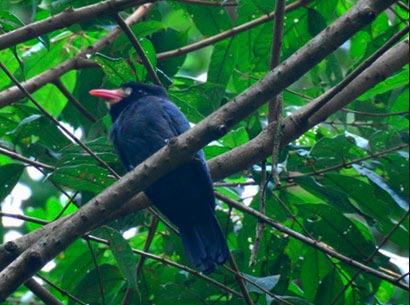
White fronted Nunbird
Selva Verde Lodge and Private Reserve – Nature Sightings in Late April
Selva Verde Lodge & Private Reserve is widely known for its biodiversity. Home to numerous mammals, birds, amphibians, reptiles and insects, it is also one of the strategic spots for bird watching in Costa Rica. The reserve boasts a bird count of around 400 species, including the migratory birds.
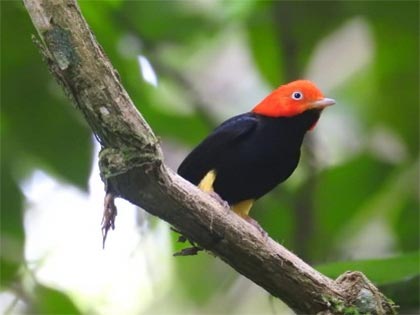
Red capped manakin
This was the case for our recent guest, Mr. Divir Barkay who is visiting us from Philadelphia with the goal of seeing and photographing the prized manakins in our region. Mr. Divir was accompanied by Randy Gomez, one of our talented naturalist guides in Sarapiquí, who was given the challenge of finding the best spots to observe and photograph this species in our area. Manakins are famously elusive, so this was no easy task! Manakins are very striking not only for their beautiful and bright plumage but also for their courtship practices, engaging in complex dances to attract their females.
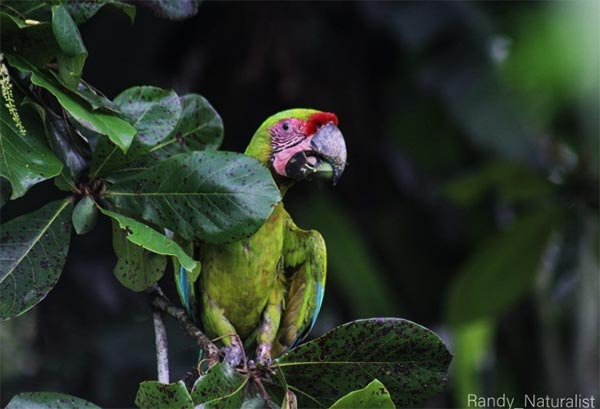
Great Green Macaw
Among the other show-stopping species in our region is the magnificent Great Green Macaw, a critically endangered species that is a keystone conservation species of the San Juan La Selva Biological Corridor, into which Selva Verde’s private reserve is part. Their raucous cry is very often heard in the morning and the late afternoon at the Lodge as it flies high overhead or alights in the secondary forest area near our bungalows.
The Almond trees that are abundant in our and adjacent reserves are both its nesting habitat and main source of food. In addition, you can find toucans, motmots, trogons, and very small species such as the warblers, both resident and migratory, and very majestic and large birds such as the guans.
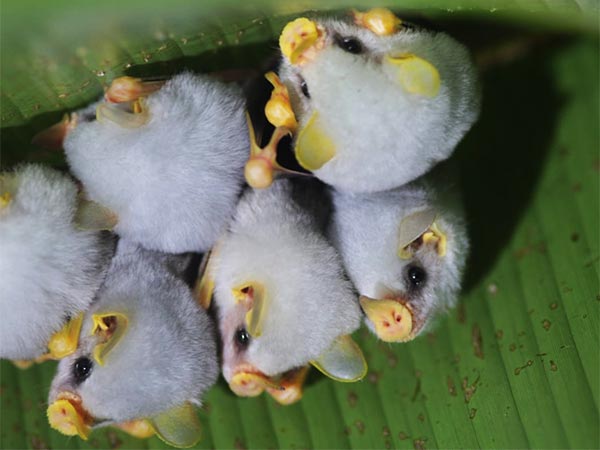
Honduran White Bats
Among the other show-stopping species in our region is the magnificent Great Green Macaw, a critically endangered species that is a keystone conservation species of the San Juan La Selva Biological Corridor, into which Selva Verde’s private reserve is part. Their raucous cry is very often heard in the morning and the late afternoon at the Lodge as it flies high overhead or alights in the secondary forest area near our bungalows.
The Almond trees that are abundant in our and adjacent reserves are both its nesting habitat and main source of food. In addition, you can find toucans, motmots, trogons, and very small species such as the warblers, both resident and migratory, and very majestic and large birds such as the guans.

Jesus Christ lizard
There are also many harmless reptiles such as the very prized emerald basilisk also known as the “Jesus Christ lizard”, for its ability to race on top of water when it feels threatened or there is a predator nearby. Usually on this hike through the forest we have the opportunity to observe mammals such as howler monkeys, white-faced monkeys, spider monkeys, bats, and sloths among others.
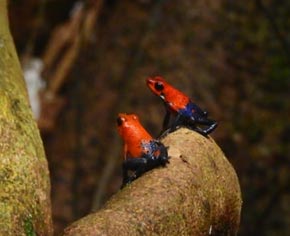
Blue Jeans Poison Dart Frog
There are also many harmless reptiles such as the very prized emerald basilisk also known as the “Jesus Christ lizard”, for its ability to race on top of water when it feels threatened or there is a predator nearby. Usually on this hike through the forest we have the opportunity to observe mammals such as howler monkeys, white-faced monkeys, spider monkeys, bats, and sloths among others.
As Mr. Barkay’s day ends, the magic of the tropical rainforest was on display and caught on film, and tomorrow will be another day.
